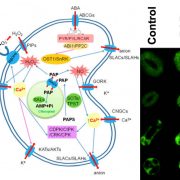
Evolution of chloroplast retrograde signaling facilitates green plant adaptation to land (PNAS)
Plant Science Research WeeklyThe evolution of signaling pathways in plants enabled the water to land transition, during which drought response was crucial for the adaptation to terrestrial habitats. Here, Zhao et al. reveal the role of drought- induced phosphoadenosine (PAP) in the regulation of abscisic acid (ABA) synthesis in…

Synergistic pectin degradation and guard cell pressurization underlie stomatal pore formation
Plant Science Research Weekly
This is a very interesting paper published by Rui et al. on the molecular mechanisms for stomatal pore formation, which includes pore initiation followed by pore enlargement. Each pore is surrounded by a pair of guard cells, which regulate the aperture of the pore and control gas exchange and water…
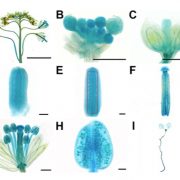
NERD1, a novel regulator of ovule number in Arabidopsis (PLOS Genetics)
Plant Science Research WeeklySeed number is a critical component of crop yield; the number of ovules determines the number of seeds. Ovule initiation in the carpel margin meristem (CMM) is controlled by genetic (i.e., AINTEGUMENTA, LEUNIG, SEUSS) and hormonal factors (auxins, cytokinins, gibberellins, and brassinosteroids). Most…
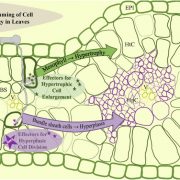
Cell type specific transcriptional reprogramming during Ustilago maydis and maize interaction (bioRxiv)
Plant Science Research Weekly
Ustilago maydis is a model biotrophic fungus which causes smut disesase in maize, characterized by tumorous symptoms on all aerial parts. Tumor formation in leaves of the host is a result of massive reprogramming by modulation of two processes, hypertrophy (cell expansion) and hyperplasia (cell division).…
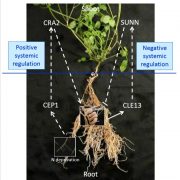
Two opposing pathways independently regulate symbiotic nodulation in Medicago truncatula ($) (Plant Physiol)
Plant Science Research WeeklyTo optimize usage of nutrient, legumes utilize multiple strategies to regulate root nitrogen-fixing symbiotic nodulation. Excessive nodulation may hamper plant’s normal growth, so fine-tuning it is important for plant survival. Laffont et al. report that there are two independent pathways systematically…
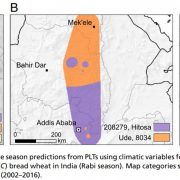
Crop variety management for climate adaptation supported by citizen science (PNAS)
Plant Science Research WeeklyCurrent research is focused on developing better crop varieties that could withstand the adversities posed by climate change; however, these varieties might perform worse than the locally-grown varieties in field conditions. This could be due to the release of varieties to farmers without performing…

Plant Science Research Weekly: March 8th
WWR Full PostReview: Evolutionary and ecological insights from herbicide resistant weeds: what have we learned about plant adaptation, and what is left to uncover?
Weeds represent a problem for the economy due to their easy resistance of pesticides, but they are also a model for adaptation, ecology and evolution.…

Recognizing Plant Physiology first authors: Jan Gunther
Plant Physiology, Plant Physiology: Author ProfilesJan Gunther, first author of Separate pathways contribute to the herbivore-induced formation of 2-phenylethanol in Populus trichocarpa
Current Position: PhD student at the Max Planck Institute for Chemical Ecology
Education: Master of Science in Biochemistry (Friedrich-Schiller-University Jena),…
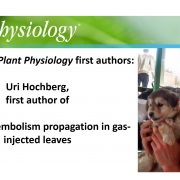
Recognizing Plant Physiology first authors: Uri Hochberg
Plant Physiology, Plant Physiology: Author ProfilesUri Hochberg, first author of Visualizing embolism propagation in gas-injected leaves
Current Position: Researcher in Department of Soil Water and Environmental sciences, Agriculture Research Organization, Volcani Center, Israel
Education: Ph.D in Ben Gurion University of the Negev
Non-scientific…

